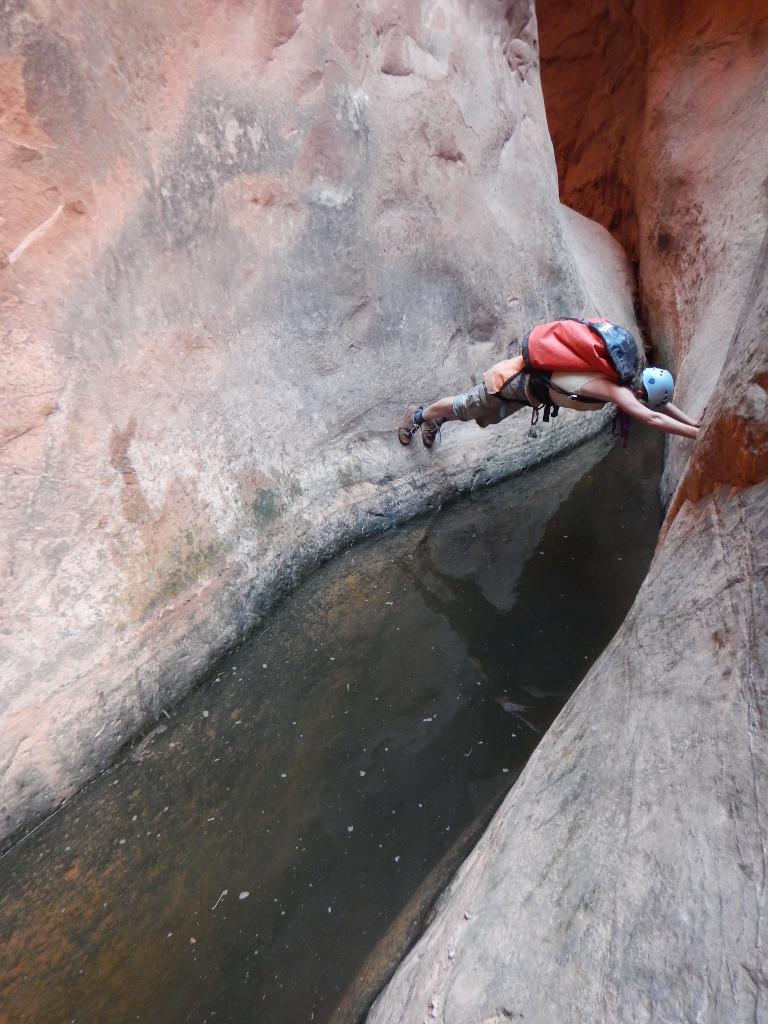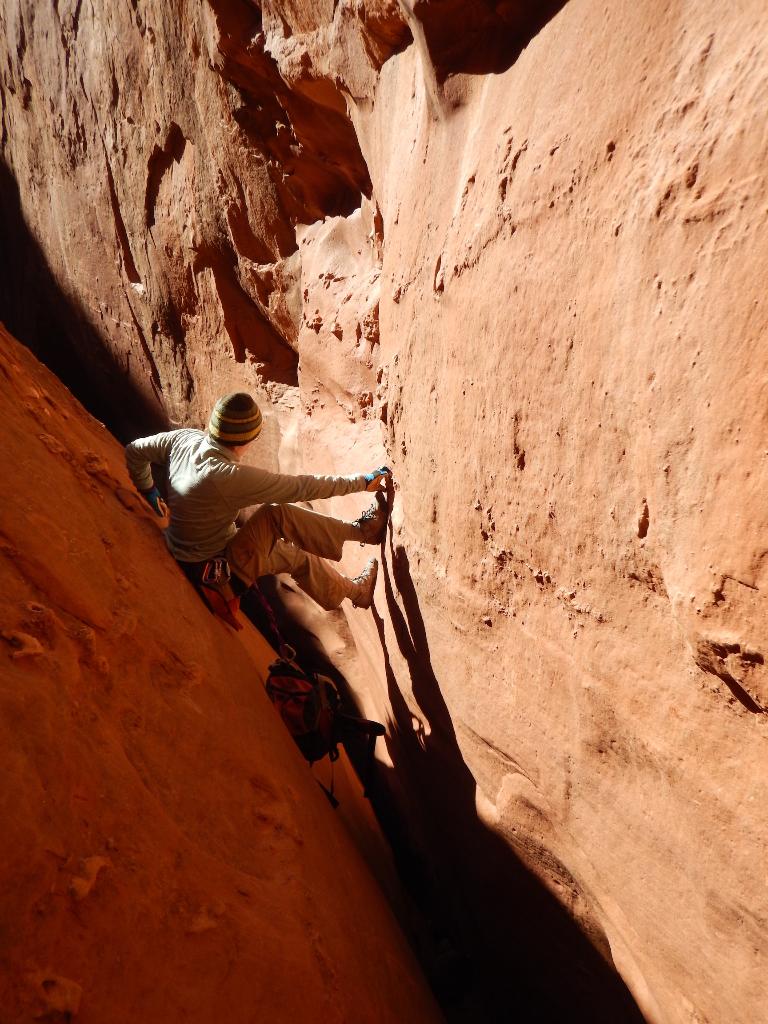What's up with canyoneering ratings!?
By: Diane Menuz

Arggh!! Canyoneering ratings!!
Coming from a climbing background, I find canyoneering ratings very unhelpful. Climbing ratings can be sandbagged or soft and your ability to climb at your local crag where you know the rock type and climbing style may not exactly translate at the next place you go. But there is still an orderly progression to climbing ratings; if you get shut down on a 5.10c, you know what to try next. Canyoneering ratings, on the other hand, are probably more consistently accurate than climbing ratings, but that is because they convey very precise and limited information. Canyoneering ratings have several components, but I am going to focus on the terrain/technical rope work ratings. Class 1 indicates essentially a hike, class 2 requires some scrambling and/or downclimbing but no technical gear, class 3 indicates that a rope will be required for rappels, as well as potentially anchor skills, and class 4 means that very advanced technical skills will be required.
Most canyons on the Colorado Plateau are rated class 3, but that certainly doesn’t mean they are all equally challenging! In some cases, a class 2 canyon may give someone more difficulty than a class 3 (more on that later). Two problems arise from this- people who are daring might feel overly confident in their canyoneering ability after a successful class 3 canyon AND people like me who tend to be cautious are never sure if they are ready for the next big thing.

What are “intermediate” canyoneering skills?
When I think about what makes a canyon difficult, I think about two sets of skills. The first are basic technical skills- building anchors, setting up rappels and rappelling, escaping potholes, basic rescue skills. Just like a climber with only sport climbing experience shouldn’t jump on a multi-pitch trad climb before gaining some experience, a canyoneer shouldn’t head out without skills appropriate to the canyon. In addition to the basic skills, there is also the question of the efficiency of execution of those skills. It is amazing how long it can take to descend a short canyon with poor rope management or if every anchor-building decision takes an agonizingly long time! Check out Road Trip Ryan’s suggestions to increase your canyoneering efficiency. Unfortunately, a class 3 rating doesn’t reveal exactly what skills will be needed in the canyon. As a climber, I find basic anchor building and rappelling very easy, but I’m not as prepared for complicated anchors or potholes.
It is possible that a more experienced canyoneer will be able to safely and efficiently lead a less experienced group through a canyon based on their technical skills, but they could also run up against a second problem- the group’s physical skills. I have gone canyoneering with newbies who brazenly walked past anchors to downclimb rappels, but I was not that person! I found downclimbs awkward and challenging when I started out; sometimes I needed the reassurance of a rope. High stemming still gives me the spooks sometimes, even after hitting up 50+ canyons in the last two years. An experienced canyoneer can help guide beginners through downclimbs and, to a lesser extent, high stem problems, by setting up rappels or spotting folks. However, this can make the canyon take substantially longer to complete. For someone with a lot of comfort rappelling but otherwise new to canyons, a class 2 canyon with a lot of downclimbs may be more challenging than a simple class 3!

What canyon are you ready for?
Before deciding on a canyon, read the canyon descriptions. Pay attention to the particular skills, both physical and technical, that the canyon requires. If the majority of the group doesn’t have the necessary technical skills or can’t deploy them efficiently or if everyone doesn’t have the necessary physical skills, the canyon is going to take longer than the posted time. Potentially a lot longer. Reports of unprepared canyoneers taking three times the posted time or being benighted are not unheard of. Many people only do canyons a few weekends a year, which makes it difficult for them to gauge their skill level and improve their canyoneering game. Start slow. Assume you are a beginner and gradually work your way into harder canyons . Don’t assume that a fast time in one type of canyon (let’s say one with a lot of straight-forward rappels), will translate into a fast time in another type of canyon. Consider everyone in the group’s ability, not just the ability of the group leader.
I am not trying to dissuade folks from going canyoneering. I am trying to provide information to help folks assess their ability and what canyons may be appropriate for them. By all means, as you gain more experience, you should take on harder and harder challenges. But make sure you know what you are getting yourself and your group into and make sure you understand the nature of the new challenge, whether it be technical or physical. Start with shorter canyons of a particular type and start early in the morning so you have the luxury of making slow decisions or moving slowly through obstacles. Read through Ryan’s canyoneering primer and tips for efficiency. You wouldn’t climb a 10 pitch route in Yosemite without first developing skills and practicing on something smaller. Canyoneering deserves the same respect,especially considering that it can be impossible to bail from many canyons.

